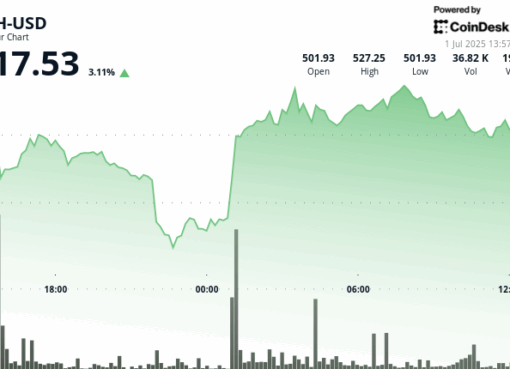Yet again, the digital economy was caught off guard when Amazon Web Services suffered its second major outage this year on Oct. 20, crippling exchange platforms like Coinbase and Robinhood and the analytics service Coinmarketcap. It was followed by a second, smaller outage just 10 days later.
According to Amazon’s initial report, the Oct. 20 outage was caused by a malfunction affecting one of its internal subsystems that manages its domain name service, leading to connectivity issues in multiple services. It resulted from a faulty update, and it ended up taking out Amazon’s critical U.S.-East-1 region. This is a massive hub of servers that powers many of the country’s top internet services. For two hours, numerous trading platforms, streaming services, payment providers and gaming networks were inaccessible to users globally.
No doubt, Amazon’s engineers were working overtime to try and fix the outage, and to the company’s credit the vast majority of services that reported problems were back online within a couple of hours. But the incident once again highlights the hazards of relying on centralized infrastructure, coming just months after a similar outage in Amazon’s eu-north-1 region. Going offline causes pain in just about every business, but for the crypto industry, where billions of dollars in value are traded by the hour, such events are unacceptable.
Incalculable Losses For Traders
Although it’s quite rare for centralized cloud platforms like Amazon to go down, it does happen from time to time. And when it does, the impact is very often monumental, affecting millions if not billions of people globally. A case in point, just six months earlier, Amazon suffered a similar disruption, taking out two of the world’s biggest crypto platforms — Binance and Kucoin — for several hours. Amazon isn’t alone in this either, for rival clouds like Google and Microsoft Azure have suffered crippling outages of their own. In fact, Azure was down for several hours on Oct. 29, with reports suggesting it took offline numerous websites and online services.
The problem with centralized infrastructure is that it’s, well, centralized. The weakness of these platforms is that they introduce single points of failure, due to the way they rely on critical components that, if taken offline, cause the entire system to come crashing down. It might be as simple as something like a computer server or a database that contains vital configuration settings, or a lone network connection that lacks redundancy. These vulnerabilities exist in every cloud, and no matter how diligent operators are they’ll always present a risk.
Coinbase was among the first services to report problems in the wake of Amazon’s mishap, and it stepped up quickly to reassure its users that their funds are safe and secure. But this clarity doesn’t fix the underlying issues of frozen transactions and delayed market orders —hat occur when systems go offline without any warning. The longer the delay, the more the price of an asset might move, meaning the trader cannot capitalize on this. They may even lose money if the price of an asset dips shortly after they entered a position, and they’re unable to sell.
While it’s impossible to calculate the exact impact, it’s likely that the paralysis inflicted on traders caused them pain and financial losses.
It’s Time To Decentralize
One possible way to prevent this is for crypto exchanges to at least partially switch to a more resilient, decentralized infrastructure that eliminates these single points of failure. By operating some key modules of the trading system on a distributed network of servers, exchanges will all but eliminate the potential for such calamities.
For an industry that prides itself on decentralization and constantly lauds its benefits, to be so reliant on vulnerable centralized cloud platforms for their own infrastructure feels like hypocrisy. While blockchain networks are distributed across many hundreds of nodes, very few exchange platforms can say the same, instead choosing to host all of their infrastructure on one or another cloud provider.
Fortunately, Monday’s outage was not quite as serious as previous incidents have been, because Amazon had most services back up and running within a couple of hours, but nonetheless it should serve as a wakeup call for the crypto industry to get its act together. Decentralized cloud infrastructure still has teething problems around latency, network coordination and scalability, but it’s maturing rapidly to support a hybrid cloud strategy at the very least. By distributing their data and systems across an expansive network, exchanges can become virtually immune to the total blackouts caused by an outage of this kind.
Centralized clouds will always have their place due to their immense scale, high performance, enterprise-grade security and the specialized services they offer, which decentralized alternatives cannot match. They will likely remain the backbone of the internet for many years to come, but they will never be able to replicate the resilience of decentralized alternatives. With crypto exchanges commanding billions of dollars of customer funds in a market where every second counts, they need to step up and make sure this episode doesn’t happen again.



